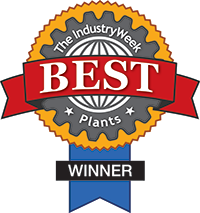 Stainless steel is one of the most durable metals in use today. Its mechanical properties are especially prized for resisting corrosion over the long term. However, different types of stainless steel have varying levels of corrosion resistance as well as particular applications for which they are best suited. Here we’ll discuss the compositions of three different stainless steel varieties: martensitic, ferritic, and austenitic. We’ll also discuss the main factors that might cause stainless steel to corrode.
Stainless steel is one of the most durable metals in use today. Its mechanical properties are especially prized for resisting corrosion over the long term. However, different types of stainless steel have varying levels of corrosion resistance as well as particular applications for which they are best suited. Here we’ll discuss the compositions of three different stainless steel varieties: martensitic, ferritic, and austenitic. We’ll also discuss the main factors that might cause stainless steel to corrode.
Stainless Steel: Corrosion Resistance
Stainless steel is a popular choice for industrial applications because of its corrosion resistance. For steel to be considered stainless, it must contain at least 10.5% chromium. Chromium allows the steel to form a passive oxide layer, which makes the metal electrochemically nonreactive to corrosive materials. The more chromium that is added to steel, the more corrosion-resistant it becomes. This resistance is strongest when the steel is fully exposed and free of deposits.
Stainless steel’s corrosion resistance can be destroyed if it is subjected to conditions that inhibit the restoration of the passive layer. Once the layer breaks down, the metal will begin to corrode.
When selecting stainless steel for your particular application, you will likely encounter the following three variations.
Martensitic Stainless Steel
This family of stainless steel offers moderate corrosion resistance. Most grades in this family are found in air or freshwater applications with limited exposure to corrosive elements. However, some grades are designed to resist basic salts, water, food acids, and the majority of atmospheric conditions. Martensitic stainless steel uses chromium as its primary alloying element and is most widely used in the medical and oil industries.
Ferritic Stainless Steel
This stainless steel family offers moderate-to-good corrosion resistance, which varies according to chromium content. As an economical alternative to austenitic stainless steel, ferritic stainless steel is commonly found in industrial and consumer products like cookware and appliances. There are some grades with better acid resistance for highly corrosive environments.
Austenitic Stainless Steel
The most corrosion-resistant stainless steel is austenitic because it has the highest chromium content (at least 16%) of all steel families. For this reason, it is also the most widely used form of stainless steel—an estimated 50% of all stainless steel in use today is austenitic.
This acid-resistant stainless steel family is highly versatile, suitable for daily operations in food production and dairy processing as well as architectural structures like the Chrysler Building in New York. One of the most popular grades is 316, which offers heat resistance, durability, strength, and easy workability. Its molybdenum content gives it superior corrosion resistance, especially against pitting in saltwater conditions.
SSP specializes in manufacturing tubing and pipe fittings from 316 stainless steel and its low-carbon counterpart, 316L. Our products are consistently used in harsh, corrosive environments, so 316 and 316L are ideal material choices for these applications.
How Stainless Steel Corrodes
Although it is one of the most durable metals, stainless steel is not invincible. The most common situations that can compromise corrosion resistance are:
- Chloride exposure: Stainless steel can undergo dramatic pitting corrosion if it is exposed to excessive chlorides, such as salts. This was a common problem in naval applications, where 304 stainless steel was once widely used. When it was discovered that 304 easily corroded in the presence of seawater and salt-rich air, naval applications shifted toward the hydrochloric acid-resistant stainless steel grade 316, which is specially designed to resist chlorides.
- Welding dissimilar alloys: Some manufacturers make the mistake of welding two different stainless steel alloys together to create a custom sheet metal. This can actually cause galvanic or bimetallic corrosion, which can start when two metals with differing mechanical properties are connected by an electrolytic material like water or a weld filler. This often causes electrical flow from one steel to the other, resulting in faster corrosion of the less noble metal.
- Accidental transference of plain iron or steel: When equipment used to process plain steel or iron is not properly cleaned before it is used to process stainless steel, the iron or steel residue can compromise the passive oxide layer of the stainless steel. This can ultimately ruin the stainless steel’s corrosion resistance.
- Extreme temperatures: Stainless steel materials have an extremely high melting point, usually well above 1,200 °F. While the material may not melt, the composition of the metal can be dramatically affected. A common problem is scaling, which causes flaking and galvanic corrosion since the scales now have a different composition from the rest of the metal.
- Unforeseen environmental factors: Other factors can include salt or moisture in the air—common in coastal manufacturing locations—that unexpectedly compromise the corrosion resistance of stainless steel. It is important to consider and prepare for these factors before carrying out a stainless steel manufacturing operation.
Corrosion-Resistant Stainless Steel Products from SSP
SSP offers high-quality stainless steel products with SilcoTek®. These high-performance coatings protect stainless steel and other materials by enhancing corrosion resistance, chemical inertness, wear resistance, and hydrophobicity.
SSP also provides Dursan® coated stainless steel valves and fittings. These coatings improve chemical inertness and enhance corrosion, wear, and surface moisture resistance.
Your application and environment will determine what family or grade of stainless steel is best. We can help you select the stainless steel products that will give you the highest level of corrosion resistance for the longest period of time. For more information about our corrosion-resistant stainless steel products, contact us today.


